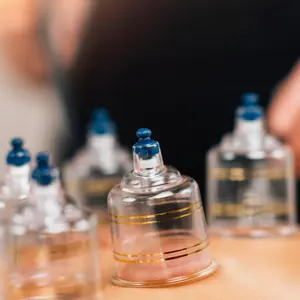

WELLthier Living and Aging

WELLthier Living and Aging
Female Reproductive Health Affected by Chemicals
It’s widely known that chemicals are expelled into the environment, placed in personal care products, and added to food. But just how do these additives affect physical health and well-being?
Researchers are continuing to study the effects of toxins on the body, and there are growing indications that female reproductive health is negatively impacted. Recent studies show that toxins known as endocrine-disrupting chemicals (EDCs) have been linked to an increased incidence of early puberty, pregnancy length disorders, and other reproductive health abnormalities. Deanna Minich, PhD, FACN, CNS, educator with the Institute for Functional Medicine, says toxins can act as estrogen mimics and disrupt the endocrine system.
Endocrine disruptors present like estrogen but are actually dysfunctional hormones that get into the body and change metabolism, bind with receptors, and disrupt normal function. EDCs are used in industry, agriculture, consumer products, and medications. Evidence supports the fact that environmental EDCs have hazardous effects on the endocrine system, so educating the public about their risks is essential. Functional medicine clinicians can offer guidance for patients about how to reduce exposure to EDCs. Treatment protocols using diet, nutraceuticals, botanicals, pharmaceuticals, and behavioral interventions, can help the body eliminate toxins.
Although the adverse effects on females is now well-known, BPA is still used globally in the manufacture of products.
Because most personal products are marketed uniquely to women, education is a key component to helping prevent damage incurred with exposure to EDCs. Many products contain EDCs such as formaldehyde, phthalates, parabens, lead, mercury, triclosan, cadmium, arsenic, and benzophenone. Women, and their children, are more vulnerable to the chemicals in their personal care products when used during sensitive periods such as preconception or pregnancy. The toxic molecules often present in products have an effect similar to estrogen and can influence hormonal regulation and fetal development.
To put the vast extent of the use of EDCs into perspective, in 2012 alone, the United States produced 9.5 trillion pounds of EDCs that were embedded in pesticides, plastics, chemical drugs, and personal hygiene products. In 1936 bisphenol A (BPA), a synthetic compound, was identified. By 1950 it was discovered that BPA could be used as the starting material for making polycarbonate plastics.
Although the adverse effects on females is now well-known, BPA is still used globally in the manufacture of products, and in the United States its use is growing. The US Environmental Protection Agency has established that it is safe to be exposed to 50kg daily, while the European Food Safety Authority has determined that 4kg per day is tolerable. Studies indicate that even low doses of BPA can cause damage to the body, especially during pregnancy.
In efforts to find a safer substitute for BPA, bisphenol S (BPS) is often used as an alternative, but the effects are just as negative and have also been found to cause reproduction issues and severe fertility disorders. BPS can be found in products labeled “BPA-free,” so it is recommended that labels be read closely.
Since the most common modes of exposure to EDCs are through inhalation, food intake, and direct contact, clinicians recommend that consumers empower themselves with knowledge. Through education and advocacy for removing harmful chemicals from products, food, land, and air, the delicate cycle of reproduction can be preserved.
REFERENCES
The Institute for Functional Medicine. (n.d.). Menarche, menopause, and endocrine-disrupting chemicals. Retrieved from https://www.ifm.org/news-insights/detox-menarche-plastics/


 By
By






